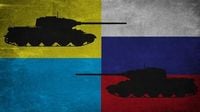On June 2, 2025, in Istanbul, Russian negotiators presented Ukrainian counterparts with a comprehensive, though highly contentious, set of military and political preconditions aimed at ending what Russia refers to as "the Ukraine crisis." This move comes after more than three years of conflict that has reshaped Eastern Europe’s geopolitical landscape and drawn intense international scrutiny.
The Russian proposals, detailed in a series of documents released by the Kremlin, outline a framework for a final settlement and include two ceasefire options alongside a roadmap to implement the agreement. However, the terms have been widely rejected by Ukraine and its Western allies as punitive and unacceptable, raising doubts over the prospects for peace.
Central to Moscow’s demands is the de jure recognition by Ukraine of Russia’s annexation of Crimea and four Ukrainian mainland provinces—Donetsk, Luhansk, Zaporizhzhia, and Kherson—to the full extent of their pre-2014 administrative boundaries. This would require Ukraine to withdraw all military forces from these territories, effectively conceding sovereignty over significant portions of its territory.
Moreover, Russia insists on Ukraine’s neutrality, demanding that Kyiv renounce any military alliances or coalitions and ban foreign military activities and bases on its soil. Historically, Ukraine had hosted numerous military exercises with U.S. and European forces both as a non-aligned state and as a NATO aspirant. The Russian proposal would invalidate these arrangements and bar future agreements incompatible with this neutrality, potentially allowing Moscow to vet or veto Ukraine’s cooperation with the European Union, especially regarding security matters.
The settlement also includes strict limitations on Ukraine’s armed forces, setting upper limits on personnel numbers, weapons, and military technology. Moscow demands the dissolution of Ukrainian nationalist formations within the armed forces and National Guard, reflecting a broader Russian strategy to suppress Ukrainian national identity by conflating nationalism with "Nazism."
On the cultural front, Russia proposes granting official status to the Russian language alongside Ukrainian and lifting restrictions on the Ukrainian Orthodox Church subordinated to the Moscow Patriarchy. These measures aim to institutionalize Russian-Ukrainian language parallelism and initiate a re-russification process within Ukraine, despite fewer than 20 percent of Ukrainians self-identifying as Russian in pre-2014 censuses, a figure that has declined further since.
Politically, Moscow demands a legal ban on the heroization and propaganda of Nazism and neo-Nazism, which it equates with legitimate Ukrainian nationalist expressions. This would lead to the dissolution of nationalist organizations and parties, further curbing Ukraine’s sovereignty over its internal affairs.
Another significant clause involves mutual renunciation of war reparations claims. By doing so, Russia effectively shifts the burden of Ukraine’s post-war reconstruction onto the European Union, a move likely to provoke resistance from Kyiv and its Western partners.
The roadmap for implementing the treaty includes several key steps: signing a memorandum on cessation of hostilities, a 30-day ceasefire commencing with Ukraine’s withdrawal from the disputed territories, conducting elections and forming political authorities within Ukraine, signing the final treaty, and seeking approval through a legally binding UN Security Council resolution. The treaty would then require ratification by both Russia and Ukraine to enter into force.
However, the sequence implies that Russia retains leverage to revoke the ceasefire if Ukraine fails to evacuate all Moscow-claimed territories within the 30-day window. Furthermore, while Ukrainian President Volodymyr Zelenskyy’s representatives have been involved in negotiations, Russia intends to sign the final treaty with a newly elected Ukrainian leadership, underscoring Moscow’s intent to shape Ukraine’s political future.
Kyiv had sought to include its main European partners and the United States in the negotiations, but Moscow firmly excluded Western involvement, insisting on a strictly bilateral process. The U.S. State Department endorsed these "direct talks" between Russia and Ukraine, a stance that has drawn criticism for sidelining key stakeholders.
Following the presentation of these terms, Ukrainian Defense Minister Rustem Umerov proposed a third round of negotiations between June 20 and June 30, allowing both sides time to study each other’s proposals. Kremlin spokesman Dmitry Peskov confirmed that Russia also needed time to review the memoranda, with no set date for the next talks as both parties seek mutually acceptable timing.
Meanwhile, tensions on the battlefield remain high. Just days before the Istanbul talks, Ukraine launched a series of drone strikes deep into Russian territory, targeting strategic bomber fleets and causing significant damage. These attacks, along with explosions on the Crimean Bridge and the collapse of bridges in Russian border regions, have been labeled terrorist acts by Moscow.
President Donald Trump, speaking on June 4, 2025, warned that Russian President Vladimir Putin plans to retaliate against Ukraine for these strikes. Putin himself dismissed the prospect of peace talks, branding the Ukrainian government a "terrorist" regime and accusing it of targeting civilians. He characterized Ukraine’s military setbacks as evidence of its incompetence and lack of political culture.
Ukrainian President Zelenskyy, in contrast, called Russia’s peace proposals an "ultimatum" and "theater," accusing Moscow of seeking to delay further Western sanctions. He proposed an unconditional ceasefire leading up to a trilateral meeting involving Ukraine, Russia, and the United States to discuss peace. Zelenskyy also highlighted a prisoner exchange scheduled for the weekend following the talks, allowing approximately 500 Ukrainian troops to return home, with plans to exchange the bodies of fallen soldiers to follow.
Despite ongoing Russian advances in the northeastern Sumy region, where Russian forces have taken several villages and shelled the city center—killing civilians—Zelenskyy downplayed these gains, asserting that Russian forces are not achieving meaningful success. However, military analysts warn the situation remains critical, with Russian troops approaching within 12 to 15 miles of Sumy’s regional capital.
Western support for Ukraine continues, with NATO members pledging additional military aid. Britain, co-chairing a recent meeting with Germany, committed to providing Ukraine with 100,000 drones by April 2026. Yet uncertainties linger over the future of U.S. military assistance, as high-profile absences at key meetings raise questions about Washington’s long-term commitment.
The current impasse underscores the complexity of achieving peace in a conflict marked by deep mistrust, territorial disputes, and competing visions for Ukraine’s sovereignty and identity. Moscow’s demands reflect a strategy to reshape Ukraine’s political and cultural landscape under Russian influence, while Kyiv and its allies remain steadfast in defending the country’s independence and Western integration aspirations.
As both sides prepare for further negotiations later this month, the international community watches closely, aware that the stakes extend far beyond Ukraine’s borders, impacting European security and the global balance of power.




